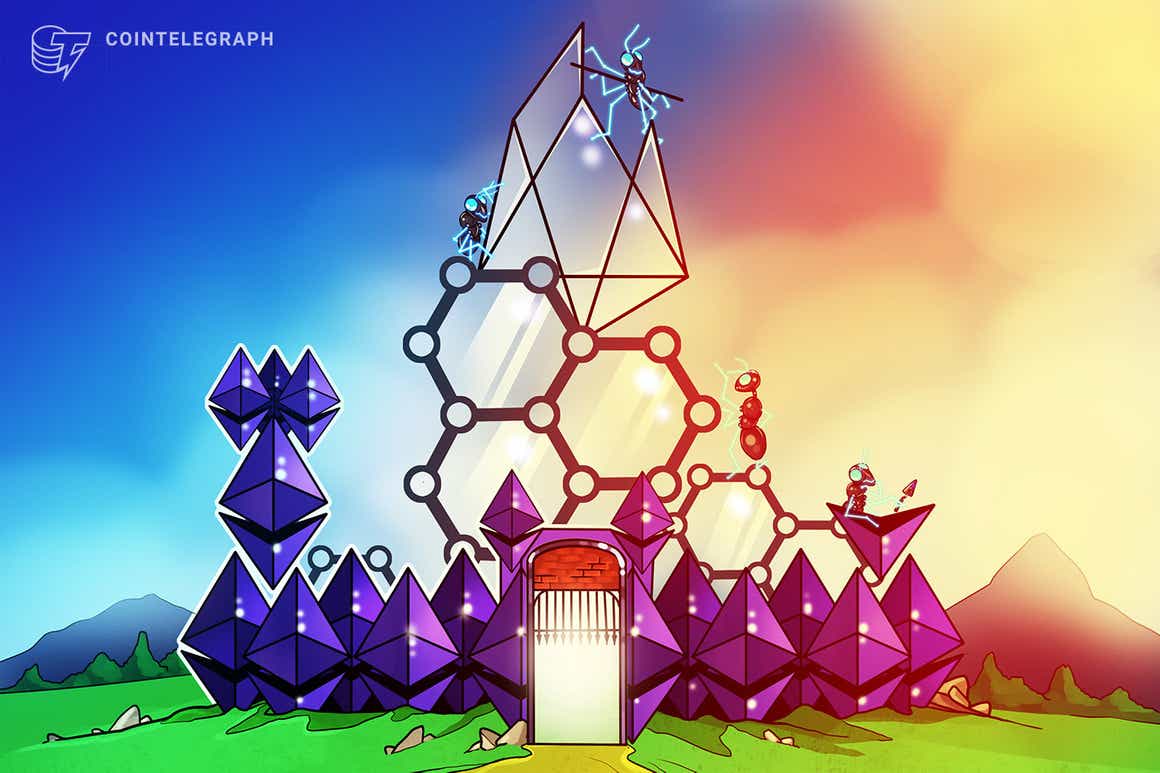Cointelegraph is following the development of an entirely new blockchain from inception to mainnet and beyond through its series, Inside the Blockchai
Cointelegraph is following the development of an entirely new blockchain from inception to mainnet and beyond through its series, Inside the Blockchain Developer’s Mind, written by Andrew Levine of Koinos Group.
In my first article in this series, I explained why Ethereum and Steem haven’t been able to deliver a mainstream social decentralized application (DApp), despite taking two very different approaches and how this makes the solution seem. Therefore, why not combine the fee-less system developed for Steem with the flexibility of a blockchain with smart contracts like Ethereum? Then, we could give developers the best of both worlds, enabling them to create free-to-use applications with the freedom to add new features whenever they want.
One could argue that this is exactly what Dan Larimer was trying to do when he left Steem and began work on EOS. Now, four years after the release of EOS, Larimer is planning to release “Fractally,” a new social application built on EOS. But, this begs the question: Why has no one been able to build a successful social media application on EOS? After all, it’s not like no one has tried.
Remember Voice?
Block.one, the company Larimer founded and led as the chief technology officer, invested $150 million into their own social application Voice, which they then released not on the EOS mainnet but on its own dedicated blockchain.
This was odd because the entire purpose of a general-purpose blockchain is that it should be possible to launch any application on top of it. As I explained in my previous article, the whole problem with Steem was that it was its own separate blockchain and so it didn’t benefit from the kind of developer and user adoption that Ethereum did. It should come as no surprise then that Voice has simply failed to deliver.
Related: Social applications are the next big trend in crypto
Fractally: Larimer’s new big thing
Larimer is now at it again with Fractally, which he says will “bring incentivized content creation to EOS.” The secret, he claims, is a “fractal governance” system, but this doesn’t explain why no one has been able to build a social application on EOS with mainstream adoption. In fact, even if Larimer can launch a great social application on EOS, what does it say about that platform that the only person able to build a great application is the literal inventor of that platform. So, what happened?

Steem x Ethereum = EOS
In a way, what Larimer was trying to do with EOS was exactly what I had described at the end of the last article. Combining the best of Steem (now Hive) and the best of Ethereum. But, therein “lies the rub.” There are three things Larimer took from Steem that might seem small, but have incredible consequences that EOS is still grappling with to this day.
On Ethereum, users have just addressed similar to Bitcoin addresses, which are a long string of numbers and letters that are free to create because they don’t take up any network storage. This is critical because anything that takes up network storage or uses some of the network’s computational resources has a real-world cost that must be paid by someone.
Steem wanted to be a social blockchain and so, the theory went. They needed a centralized account that would be easy to remember which they would use to manage their frequent interactions. So, it made perfect sense for these accounts to have human-readable names that were easy to remember, but that also meant that they took up network storage. But, this centralized account also makes you a target. If you have a single private key that you regularly use to access an account and that account holds valuable tokens, then hackers are going to do their best to gain access to your computer so that they can steal your money and anything else of value you might have on there.
Related: An inside look at the moral and technical considerations of crypto social media
To solve that problem, every account name also had multiple addresses associated with it each with different authority levels so that the user wasn’t always exposing the private key for the address holding all their tokens. All of this stuff is taking up valuable network storage which is why, despite having fee-less transactions, Steem had an account creation fee.
Expensive storage
Larimer obviously liked this design because he implemented a very similar system on EOS — account creation fee and all. To make matters worse, the EOS database is built on something called “memory-mapped files,” another vestige of the Steem design, an important consequence of which is that it is designed to use the most expensive form of storage possible: random-access memory (RAM). This means that EOS users don’t just need to buy accounts, but those accounts are going to be inherently expensive because what you’re really buying is the RAM needed to store that information.

Fee-less BUT
What this really highlights is that fee-lessness is clearly not a binary. EOS is…
cointelegraph.com
